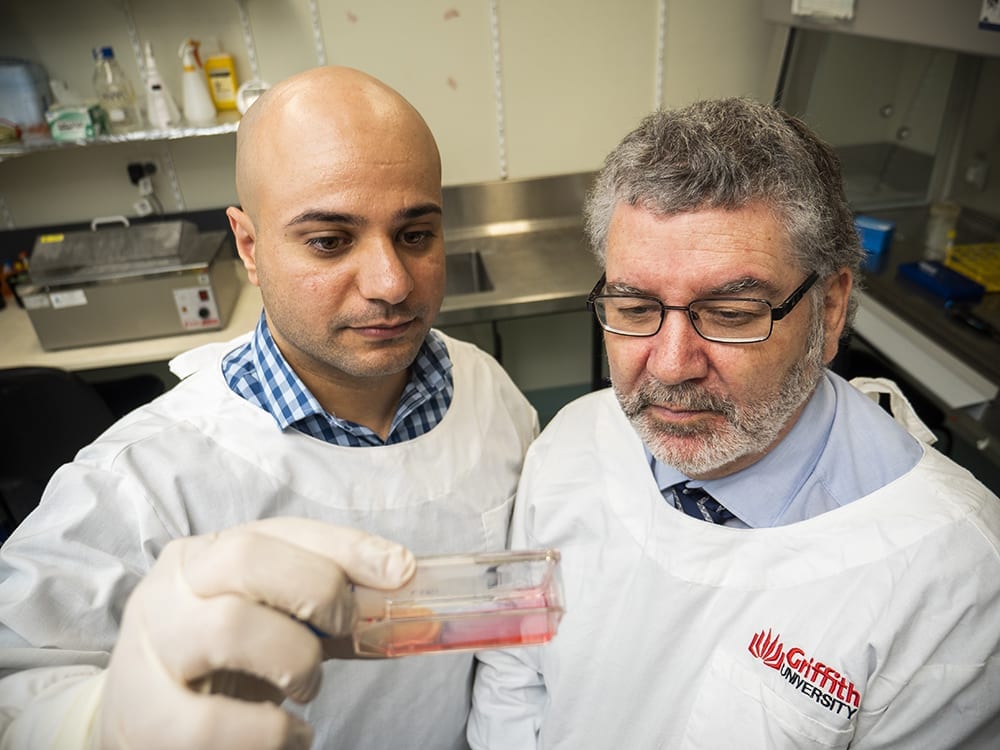
Smallholder poverty in sub-Saharan Africa is often linked to sandy soils, which hold little water and are low in nutrients. A new technology may be able to enrich fields and farmers without massive investments in irrigation and fertilizer,
Many farmers across sub-Saharan Africa try to coax crops out of sandy soils that are not ideal for holding water and nutrients. Their harvests are predictably poor. A traditional approach would have them apply more fertilizers and use irrigation, but both of these options require access to resources and infrastructure that many of them do not have. A relatively new technology modeled for eight African countries, and currently being tested in Zimbabwe, shows potential for substantially improving harvests through increased water retention and accumulation of organic material to make soils more fertile.
The technology consists of long strips of polyethylene membranes installed in a U-shape below and near the root zones of crops. Known as subsurface water retention technology (SWRT), these membranes have mostly been used in different soils in other regions of the world. Now for the first time, their impact was modeled for Africa. Projected results showed that the SWRT could increase maize yields in the eight African countries in the study by close to 50 percent and capture some 15 million tons of carbon in 20 years.
“With this new technology, sandy soil has the potential to lead a new green revolution,” said George Nyamadzawo, a professor at Bindura University in Zimbabwe.
The researchers said this simple technology, if deployed and adopted at scale, could address major issues facing sub-Saharan African farmers, including food security and erratic rainfall patterns, while also helping countries meet climate change mitigation targets. The study was published in Frontiers in Sustainable Food Systems in in September.
“We should refuse to allow sandy soils to limit smallholder farmers from reaching their full potential,” said Ngonidzashe Chirinda, a researcher at the International Center for Tropical Agriculture (CIAT) who co-authored the research. “In arid and semiarid regions with poor soils, smallholder communities continue to suffer due to soil-based poverty. Our research shows SWRT has the potential to effectively change this without recurring to traditional and potentially expensive remedies.”
For the study, SWRT was modeled for the sandy soils of eight countries in Southern Africa and Eastern Africa: Angola, Botswana, Kenya, Namibia, Mozambique, South Africa, Tanzania, and Zimbabwe. The main objective of the study was to model scenarios of adoption of SWRT and estimate increases in maize yields, crop biomass, and soil carbon sequestration.
Co-authors include scientists at the Swedish University of Agricultural Sciences (SLU), in Sweden; Jomo Kenyatta University of Agriculture and Technology, in Kenya; Cape Peninsula University of Technology, in South Africa; Bindura University of Science Education, in Zimbabwe; and Michigan State University (MSU), in the United States.
“Potential benefits are obvious with new technologies such as SWRT, but there is a need to overcome non-technical barriers; this requires support from decision-makers who can put in place the necessary policies and financial mechanisms to support farmer adoption,” said Libère Nkurunziza, the lead author and researcher at SLU. “Similar technologies should be tested and adapted to smallholder farmer conditions to solve productivity challenges on sandy soils.”
Using data collected in other regions where SWRT has been tested, the authors made their projections for Africa. The technology is now being tested in Zimbabwe, through a new Swedish Research Council-funded project, called Productive Sands, that is being led by SLU.
“The new innovative, long-term SWRT will lead the way for modifying soils that best assist plant resilience to changing climates and associated weather patterns, enabling smallholder farmers of sandy soils to establish reasonable nutritious food supplies and annual income across all nations,” said Alvin Smucker, a co-author from MSU and one of the pioneers of the technology.
Learn more: No soil left behind: How a cost-effective technology can enrich poor fields
The Latest on: Water retention technology
[google_news title=”” keyword=”water retention technology” num_posts=”10″ blurb_length=”0″ show_thumb=”left”]
via Google News
The Latest on: Water retention technology
- Venus has lost almost all of its water, but why did it disappear?on May 6, 2024 at 3:00 am
Reflecting on Venus's past, the researchers suggest that it once harbored as much water as Earth, but now has 100,000 times less.
- Enjoy Cool Air Everywhere with Kenstar’s Top 10 Air Coolerson May 2, 2024 at 10:03 pm
As summer approaches, the quest for cool refreshing air increases. Kenstar, a trusted name in the coolers industry, offers a range of air coolers designed to deliver superior cooling performance.
- Water retentionon April 30, 2024 at 5:00 pm
Extreme heat is one reason why your body may retain too much water, sometimes up to 3 or 4kg. BUT fluid retention also strikes many women when their reproductive-hormone levels are fluctuating ...
- HL Shorts: Multigenerational Recruitment and Retention Strategieson April 29, 2024 at 5:00 pm
Leaders need to redesign care models and incorporate technology in a way that is helpful and makes workflows more efficient.
- Top 8 Best Dandelion Supplements for Water Retention in 2024on April 29, 2024 at 5:00 pm
The problem of water retention, which can be bothersome and uneasy, impacts a considerable number of people. Luckily, there are natural supplements that can help alleviate this issue. Dandelion is ...
- How is Technology Used in Higher Education?on April 24, 2024 at 5:00 pm
Additionally, educational apps and software provide personalized learning experiences tailored to individual student needs, while gamification elements enhance motivation and retention. Technology ...
- Top 6 Best Water Retention Supplement in 2024on April 23, 2024 at 5:00 pm
Water retention supplements are a widely used type of dietary aid designed to assist individuals in minimizing bloating and fluid accumulation in their body. Common elements found in such ...
- Is there an alternative treatment for water retention?on April 11, 2024 at 5:00 pm
Blood returns to the heart from the tissues in vessels called veins. Veins contain valves designed to ensure that blood travels towards the heart, but not in the other direction. However, veins do ...
- Survey shows that medical technology can improve access, but may hurt employee retentionon April 7, 2024 at 5:00 pm
Researchers asked CEOs about the most pressing issues, retention struggles, technology trends, and planned digital investments. Among the key findings: 95% of CEOs see digital technology as ...
- Office of Institutional Analysison November 12, 2023 at 12:54 pm
Retention and graduation rates are measured from the time a student enters the university. Students are tracked in cohort groups by entrance year for the indicated time period. This information is ...
via Bing News









